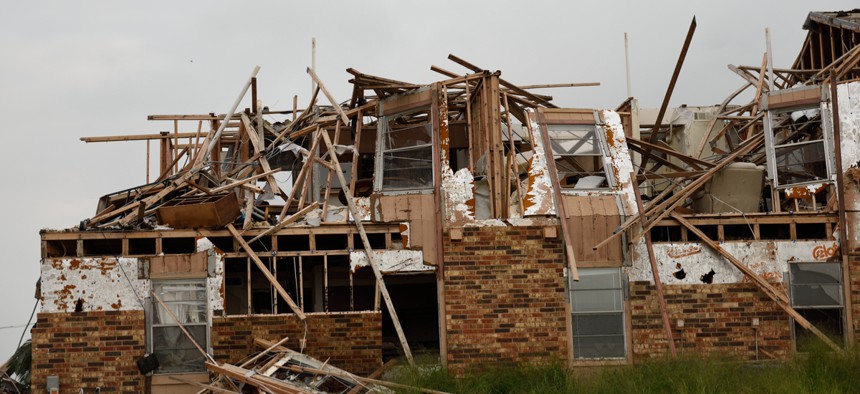Federal Disaster Recovery Efforts Are 'Not Sustainable,' Report Says

The report focuses on Hurricane Harvey recovery in Texas, but says the results are applicable nation-wide. Shutterstock
A report released last month says federal disaster funding does not encourage risk mitigation at the local level.
Disaster recovery efforts across the country are not sustainable because most of them do not adequately reward communities that take steps to mitigate risk, according to a report released last month on ongoing recovery programs in Texas after Hurricane Harvey.
“The current system cannot be sustained,” states the report, titled Rethinking Disaster Recovery and Mitigation Funding in the Wake of Hurricane Harvey. “The shortcomings of the system are not just a burden to disaster-prone states, which, for myriad reasons, end up rebuilding without adequately addressing their risks, but to the entire nation, which bears the financial burden of these disasters and our flawed recovery funding system.”
The report focuses on recovery practices along the Gulf Coast in Texas, but notes that “the discussion laid out here is applicable to other localities and the nation as a whole.”
Researchers found that while most decisions related to disaster preparedness—flood mitigation practices, for example, or enforcing setbacks for oceanfront properties—are made at the local level, most recovery funding comes from the federal government. Funding allocations usually do not factor in whether a municipality has taken active steps to decrease risk, meaning there’s little urgency for local officials to reform in the wake of a natural disaster.
“The use of federal disaster funds is proving ineffective in lessening risk and building resilience to future events,” the analysis says. “The primary limitation is that the responsibility for resilience building rests largely with the federal government, with little incentive for change at the local level.”
That system creates a “moral hazard” that rewards dicey decisions, the report says.
“A classic hypothetical example of moral hazard is a person who purchases health insurance and then engages in risky behaviors because they know they are covered by the insurance,” it states. “If the same person did not have medical coverage, they would likely act more conservatively. Similarly, communities may neglect mitigation and resilience policies because they can count on the federal government to pay for disasters.”
The report, which was released by Rice University's Kinder Institute for Urban Research and the Harte Research Institute for Gulf of Mexico Studies at Texas A&M University, offers a number of solutions, many of them focused on increasing local responsibility for recovery.
“Cities, regions and the state must work together to create more effective mitigation and recovery plans rooted in shared principles,” it says. “Explicitly delineating the responsibility of federal, state, and municipal actors in the disaster recovery funding system, rather than assuming federal responsibility, would encourage long-term local investments in mitigation.”
The report also suggests establishing a “sliding-scale cost-share” between federal and state governments rather than guaranteeing a large amount of federal funding after a natural disaster.
The National Flood Insurance Program could also be strengthened through “the usage of long-term insurance contracts with an obligation for homeowners to mitigate flood risks, or through enforcing hazard mitigation.”
Kate Elizabeth Queram is a Staff Correspondent for Government Executive’s Route Fifty and is based in Washington, D.C.
NEXT STORY: Trump Administration Takes First Step in Weakening Fuel Economy Standards





